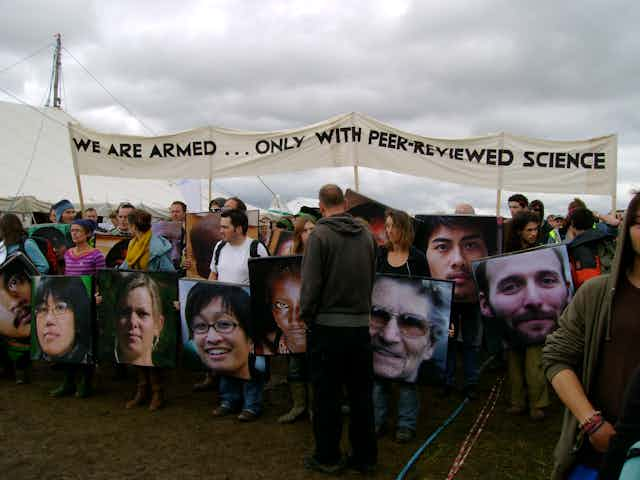Why is science not delivered as part of our routine news bulletins in the same way as, say, business and sport?
Enter a group from the University of Queensland, who yesterday posted an open letter to radio station Triple J and initiated an online petition asking that the station include at least 20 seconds of science news in its hourly news updates.
The group, calling itself And in Science, has garnered wide support for its goals of increasing science reporting in news, including from the doyen of science reporters, Robyn Williams.
Give them what they want
The Australian National University’s ANUPoll of 2010 showed some interesting data regarding how Australians view science.
It is noteworthy that more Australians were interested in hearing about health issues, new medical discoveries, environmental issues, new scientific discoveries and new inventions and technologies than they were about sport or politics.
Indeed, each of the science categories mentioned alone ranked as more popular than sport or politics:

Combine this with the finding that 45% of respondents felt they were not very well informed or not at all informed about science, and a clear imperative seems to be that Australians in general would welcome more news about science in their lives.
This stands in contrast to the actual amount of science seen in news reports – and for that reason alone it’s maybe right the spotlight is now shifting to the media organisations themselves.

Selling the story
Arguments can be made about the complexity of science (after all, how often are words such as “molecule” and “gene” mentioned on the assumption their meaning is clear?), but those same arguments could be made about finance, for example, which is a regular addition to hourly news.
How many of us appreciate the significance of the value of the dollar, whether the market has risen or fallen by a certain amount, or the consequences of the Tokyo stock market opening up 1.3%?
British doctor and science writer Ben Goldacre, writing in his weekly column in The Guardian in 2005, noted that science stories seem to be one of three types:
- wacky (such as the secret formula for love revealed )
- scary (such as Queensland’s recent flying fox plague)
- breakthrough (such as the cervical cancer vaccine)
I might add “quirky” to the list, citing examples such as the recent work of British scientists in producing fuel cells that break down urine to produce electricity. It’s not hard to imagine the uptake of the story would have been less if, say, potato skins had been used in place of wee.
To what extent this suggests science news is geared for presentation simply as entertainment is a question worth asking.
Breaking it down
One problem with science reporting is that a nuanced understanding of the research, its development and potential applications, is lost in translation to the news format, and this can create a two-dimensional picture that is not representative of the science.
Sometimes this is a result of squeezing a complex concept into a short space, but it can also be the consequence of a lack of understanding on the part of journalists.
Much of science is a slow march, but the milestones can be significant. A new research facility, a substantial grant to investigate a problem or phenomena, new potentials for collaboration, budget allocations and the like still go on while interesting results are being published.
But reporting on this requires some degree of networking, and organisational infrastructure plugged into the players in the field.
The Australian Science Media Centre (AusSMC) exists to give “journalists direct access to evidence-based science and expertise”. It also provides advice to journalists on the nature of science, explaining about uncertainty, the role of peer review, encouraging reflection on the significance of the science and a range of other useful tips.
In addition to the AusSMC, a number of science outlets – among them The Conversation – provide a stream of science news ripe for placement into mainstream news stories, whether or not that placement actually happens.

It must also be problematic that the number of specialist science reporters (as with many other specialised news and reporting roles) is decreasing. If a news outlet lacks both expertise and understanding of science reporting, it’s not hard to see why there would be a lack enthusiasm to include it.
That’s not to say that Australian science reporting in general is in crisis. Triple J itself, as And in Science acknowledges, hosts scientist and author Dr Karl’s Science on Mornings.
ABC Science delivers excellent science news, information and education resources and programs, and Robyn William’s The Science Show is world-class.
One might notice the national broadcaster is well represented in this area, and it would be encouraging for it to diffuse science into its regular news bulletins.
It would also be nice to see other local and national media outlets do the same. The public – it seems – wants it, the resources are available, our scientists and science communicators are among the best in the world, and we are, as a nation, aware of the benefits of scientific literacy for sound democratic participation.
A positive response to the And in Science petition would be a good start.
For more details of the petition see the And in Science website.

